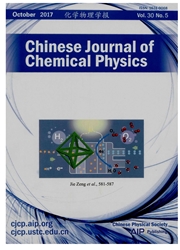

 中文摘要:
中文摘要:
利用扫描隧道显微镜和扫描隧道谱方法,研究TAu(1111表面钻酞菁分子薄膜(CoPc/Au(111)的自旋弛豫现象.首先通过测量非弹性自旋翻转谱展宽获得自旋弛豫时间,然后根据类Korringa公式对其进行了定量分析.发现计算自旋弛豫时间时,如果只考虑导带电子与局域d电子间的自旋交换相互作用(s—d交换作用),尽管可以解释磁性原子在金属表面上的弛豫时间,但不能解释CoPc分子在Au(111)表面的情况.如果考虑CoPc分子中的7r电子是自旋极化的,可以很好地解释实验现象,因为分布在Pc大环上的7r电子也可能散射导带电子.分析表明,在s-d交换作用基础上,7r电子对导带电子的散射为自旋激发态提供了有效的自旋弛豫通道,导致在这种金属表面的分子系统中的自旋弛豫时间非常短.
 英文摘要:
英文摘要:
We present our investigation on the spin relaxation of cobalt phthalocyanine (CoPc) films on Au(111) (CoPc/Au(111)) surface using scanning tunneling microscopy and spectroscopy. The spin relaxation time derived from the linewidth of spin-flip inelastic electron tunneling spectroscopy is quantitatively analyzed according to the Korringa-like formula. We find that although this regime of the spin relaxation time calculation by just considering the exchange interaction between itinerant conduction electrons and localized d-shells (s-d exchange interaction) can successfully reproduce the experimental value of the adsorbed magnetic atom, it fails in our case of CoPc/Au(111). Instead, we can obtain the relaxation time that is in good agreement with the experimental result by considering the fact that the 7c electrons in CoPc molecules are spin polarized, where the spin polarized 7c electrons extended at the Pc macrocycle may also scatter the conduction electrons in addition to the localized d spins. Our analyses indicate that the scattering by the π electrons provides an efficient spin relaxation channel in addition to the s-d interaction and thus leads to much short relaxation time in such a kind of molecular system on a metal substrate.
 同期刊论文项目
同期刊论文项目
 同项目期刊论文
同项目期刊论文
 期刊信息
期刊信息
